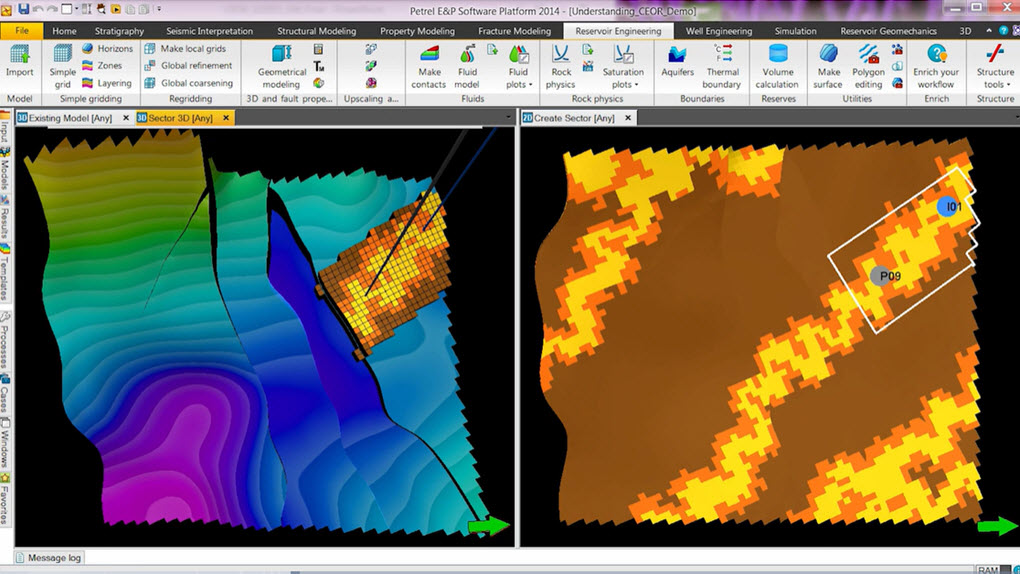Eclipse EOR enables modeling chemical enhanced oil recovery techniques to improve tertiary recovery within the simulation workflows. The result is fast and accurate prediction of the dynamic behavior, as described in the following for some of the most common methods.
Solvent
Eclipse EOR’s solvent model is a four-component extension of Eclipse Blackoil that enables modeling of recovery mechanisms in which the injected fluids are miscible with the hydrocarbons in the reservoir. The immiscible-to-miscible transition is modeled as a function of the solvent fraction and the viscosity and density of the mixture by using a Todd-Longstaff approach. Relative permeabilities and capillary pressures are represented as functions of the miscibility pressure.
Foam
Foam is used to reduce gas mobility and slow down gas cap formation or the breakthrough of injected gas. Eclipse EOR simulation tracks the progression of foam throughout the reservoir via a tracer and expresses the gas mobility as a function of foam concentration and other relevant parameters. It takes into account the adsorption of foam onto the rock via analytical models or tabulated isotherms and includes foam decay effects as a function of the oil and water saturations.
Polymer
Adding polymer to injected water decreases its mobility and hence reduces viscous fingering and improves sweep efficiency. The mobility reduction is due to two effects: The viscosity of the polymer solution is higher than that of pure water, and the reservoir permeability to water is reduced as a result of polymer adsorption onto the rock while the mobility of oil is unaffected. Eclipse EOR’s polymer model takes into account both of these factors using a modified Todd-Longstaff approach to model fluid viscosities, polymer-water mixing, and resulting slug deterioration.
In consideration that many polymer types show a large dependency on the presence of salt, Eclipse EOR enables investigating the effects of brine concentration on the efficiency of the polymer flood. The simulator also takes into account the inaccessible pore volume arising because of the large size of the polymer molecules.
Surfactant
A surfactant provides a way of recovering the residual oil by reducing the surface tension between the oil and water phases. Very low oil–water surface tension reduces the capillary pressure to allow water to displace extra oil. Eclipse EOR’s surfactant model handles the important features of a surfactant flood on a full-field basis. A key factor in the success of a surfactant flood is the extent to which the surfactant is absorbed onto the reservoir rock. Eclipse EOR models this process using either an analytical approach or tabulated isotherms.
Alkaline
Injecting chemicals with a high pH can trigger reactions with petroleum acids to form in situ surfactants. In addition to reducing surface tension effects, alkalines can decrease the rate of adsorption of surfactants and polymers. Eclipse EOR simulation models the injection of alkaline via a tracer in the water phase, with oil–water surface tension and the adsorption of polymer or surfactant varying as a function of alkaline concentration.
ASP
Frequently, chemical floods are done in combination, and one of the most common components is alkaline-surfactant-polymer (ASP) flooding. These recovery processes can be simulated easily in Eclipse EOR by using the previously described models and applying sophisticated field management logic.
CO2
Eclipse EOR extends the Eclipse Compositional simulator to simulate the physical and chemical processes involved in the injection, storage, extraction, separation, and mixing of CO2.

